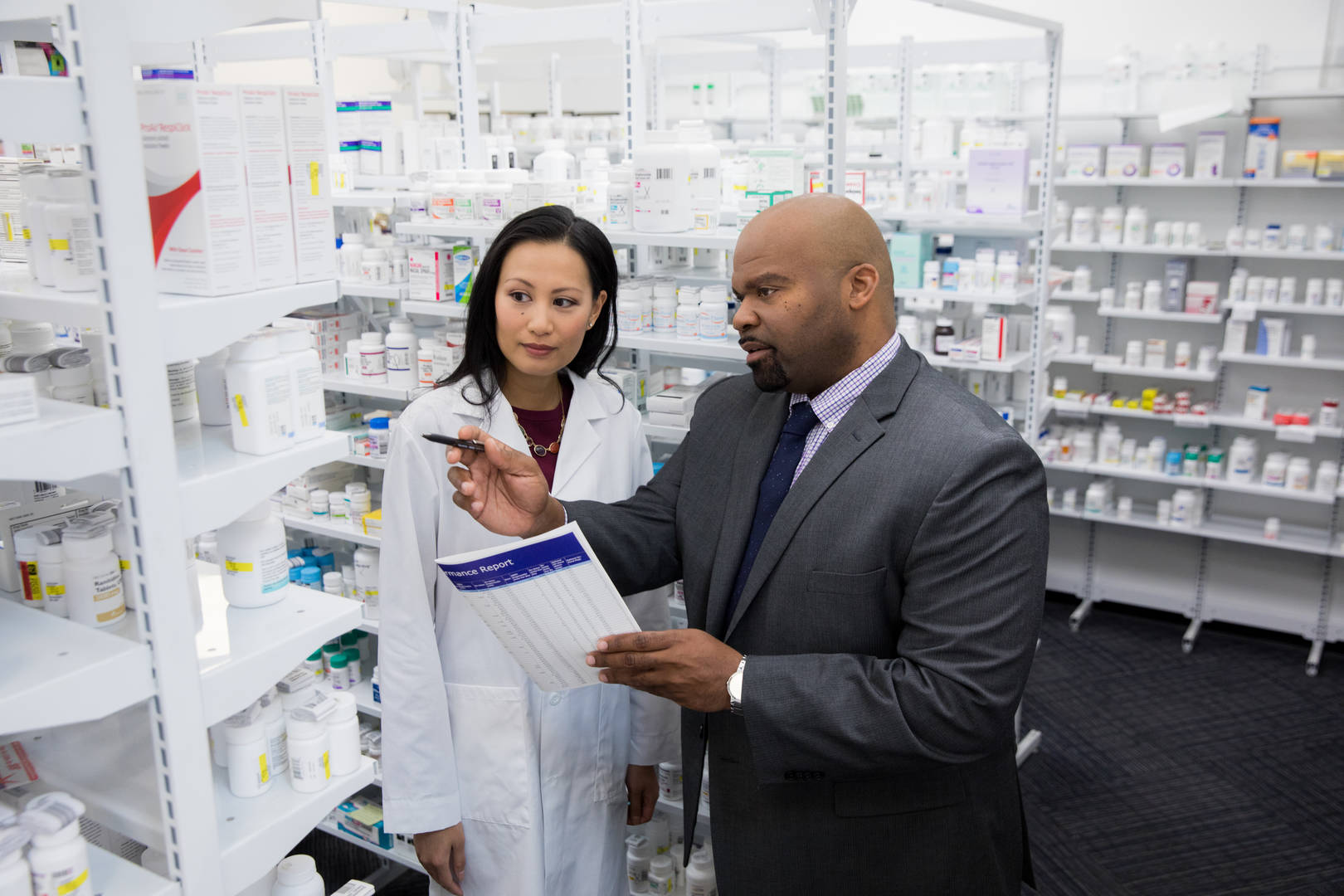Six tips for pharmacies administering the COVID-19 vaccine
By Carla Frehn, Jason Montgomery

Many independent retail pharmacies are preparing to administer the COVID-19 vaccine as part of the Federal Retail Pharmacy Program. But stepping into this vital role might feel a little daunting, especially with so much demand for the coronavirus vaccine. How can your pharmacy prepare to give the vaccine to patients? These six tips will prepare your team and your patients for a successful vaccine administration program.
As you read these tips, keep in mind that there is no one-size-fits-all approach to follow. Every independent pharmacy is unique in staffing, size, and layout. Take these ideas and apply them in the way that best suits your store.
1. Automate as much as possible
Administering the COVID-19 vaccine can be stressful as you try to maintain safe practices and social distancing while delivering as many doses as possible as quickly as possible. That's why it's important for you to choose a scheduler that streamlines the experience for your patients and your staff.
The CDC requires that each pharmacy participating in the Federal Retail Pharmacy Program use a vaccine appointment scheduling tool. Some schedulers let you upload consent forms and instructions in addition to scheduling appointments, so everything is sent to the patient automatically and handled in the background before the appointment. Look for a scheduler that frees you from manually handling paperwork so you can focus on patients.
2. Be smart about scheduling
Set up your scheduler to work in accordance with how long product will last. A vial of vaccine can expire quickly once you open it (products currently in market last six hours once opened). If one vial can vaccinate 10 people, for example, make sure you schedule appointments in groups of 10 to avoid product waste. It's also a good idea to have a back-up list of eligible patients you know you can get into the pharmacy quickly if someone cancels their appointment.
As you think about when to schedule appointments, think through your staffing needs. You'll need enough people to handle intake forms and manage the vaccination process. Do you have enough staff to do this and carry on with day-to-day pharmacy operations? Some larger volume stores have two or three pharmacists on staff so they can easily schedule appointments throughout the day. Smaller stores may need to get more creative and bring in extra help. Consider tapping nurses, retired pharmacists, and other trained professionals in your community who would be willing to volunteer.
Once you evaluate who you'll need on site, consider your options for appointments. Some pharmacies vaccinate every 15 minutes all day. Others set aside blocks of time, such as between the hours of 9 a.m. and 11 a.m. Some may hold after-hours vaccination clinics, while others offer weekend clinics. There's really no best practice except for determining what works best for your pharmacy.
3. Assess your physical space
Take a look at the area you have available not just for vaccinations, but for intake, waiting, and observation. Each patient needs at least 15 minutes of observation for anaphylactic shock after getting a shot. Many vaccination sites use a designated observation area where they provide refreshments and seating. Does your pharmacy have ample space for this?
The 15-minute observation time is an excellent opportunity for staff to assist patients with their other pharmacy needs. As you schedule vaccine appointments for your pharmacy patients, is there an MTM case that can be completed? If there's a new patient in the store getting vaccinated, could someone speak to them about their pharmacy needs or health topics they could use additional education or guidance on? Of course, you can also make sure the patient is picking up any prescriptions that may be ready, but also make sure all of their OTC needs have been addressed. The waiting and observation times are also good opportunities to survey your customers to get feedback on your customer service, product availability, prescription management process, and anything else you'd like to hear about directly from customers.
"The 15-minute observation time is an excellent opportunity for staff to assist patients with their other pharmacy needs."
Patients will likely show up early for vaccine appointments, so you may need to set aside additional space as a pre-vaccination waiting area. As an alternative, some pharmacies have patients call when they arrive and then stay in their cars until they're notified it's time for their appointment. This setup can help stores better maintain social distancing, but it may require additional signage and dedicated staff.
Some smaller pharmacies simply don't have the physical space to host a vaccine clinic indoors. If that's a challenge for you, consider setting up an outdoor tented clinic or curbside vaccinations.
4. Plan ahead for open and detailed communications
You're going to get a lot of calls and messages, so be ready. Make sure to update your website with a link to your online scheduler. Be specific about who is eligible and how to set up an appointment. Let your customers know if there's a waitlist or if they should visit the website later to watch for openings.
Be mindful of the demographics eligible for vaccinations and how best to reach them. For example, if only ages 75 and older qualify, direct phone calls might be the best way to confirm appointments rather than email or text. You might also want to update your social media channels for caregivers and/or other curious customers.
Be prepared for any safety questions your patients might ask. They might want to know about side effects, how they'll feel the next day, how long they should wait after getting a flu vaccine, and if they should wait to be vaccinated if they've recently been sick. The CDC provides a list of frequently asked questions and answers you can share with patients.
Consider making your pharmacy's information publicly available on the CDC's VaccineFinder. This tool lists vaccination availability throughout the country. Providers can choose to display their locations and a link to their scheduler.
5. Keep PPE accessible
Make sure you have plenty of PPE, especially gloves and masks. You'll want to house your supplies where they are convenient and easy to access. You're going to be retrieving new supplies over and over, so make sure everything is readily available.
6. Make reporting part of the process
Leave time in your schedule to complete all your required reports at the end of the day. The CDC's VaccineFinder requires daily inventory reporting, and your state or local agencies may also have requirements. Set aside 15 to 30 minutes each day to fulfill your reporting requirements, including billing. If you don't, you might risk losing your vaccine allocation moving forward.








